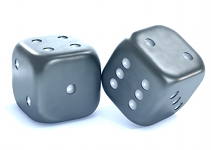
Have you ever wondered how Swing dance competitions are scored?
Here is the answer. In this post I would like to explain you a widely accepted scoring system in the Swing dance world called Relative Placement.
What is Relative Placement
Relative Placement is a scoring system which provides a fair method to value each judge's subjective vote. It makes sure that every judge has an equal vote on the end result, no judge has more power than the other one.
Consequently, one high or low judge is disregarded and favoritism or bias from a judge is avoided.
How does Relative Placement work
Judges
A minimum of five judges are required. Also possible are six, seven, eight or nine.
In the preliminary and semi-final round an even or odd number of judges may be used: five, six, seven, eight or nine. In Jack & Jill competitions, one half of the judges may judge leaders, the other half followers.
A final round of a competition must be judged by an odd number of judges: at least five, recommended seven, preferred nine.
Preliminary Round, Semi-Finals, Finals
In the preliminary round and if needed in the semi-finals, the competitors (single, couple or group) are not ranked in a specific order, a call-back system is used instead.
The judges select competitors for the next round (basically yes or no) and determine alternates.
The scorer (which in most cases is the head judge) transforms the selections in ordinals: 1 for the selected competitors, 2 for alternates and 3 for the unselected. According to the total number of received 1s, 2s and 3s the competitors get ranked.
The head judge determines how many competitors are promoted for the next round. There are two possibilities:
- prefixed number of semi-finalists or finalists
- considering the natural break in the ranking (often it occurs, that the first group of ranked competitors are close together before there is a break to the second group with the rest of the ranked competitors)
Final Placements
In the finals all the competitors (usually couple or group) get placed by the judges by defining a rank: 1st place, 2nd place, 3rd place, etc. while duplicate placements are not allowed.
For the final placement a majority is needed. If no competitor has a majority of the same placement, the next placement is added to the previous placements until a majority is reached:
- 1st and 2nd place (= 1-2)
- 1st, 2nd and 3rd place (= 1-3)
- etc.
If two or more competitors have an equal majority, the numerical value of the ordinals for each competitor is added. The competitor with the lower sum get ranked higher. If the sums for two and more competitors are equal, the next placement is added to the previous placements.
Let's take a look at two examples
Examples of Relative Placement
Example 1:

In this example, the result is clear through all competitors. The majority of votes with five judges is three.
- Although judge 2 placed competitor #1 fifth, the majority of three judges placed them first, so the final place is first as well
- Competitor #2 got one first place and two second place votes. Therefore 1-1 is 1 and 1-2 (1st plus 2nd) is 3.
- Competitor #3 got no first place, one second place and four third place votes: 1-1 is 0, 1-2 is 1 and 1-3 is five (1st plus 2nd plus 3rd)
- etc.
Example 2:

In this example we have a more complicated situation. The majority of votes is still three.
- For competitor #1 the result is clear, the majority of judges voted them first.
- Competitor #2 and #3 reached both the majority of three for 2nd place. Now we take the sum of the ordinals: 1+2+2=5 (written in brackets) for both competitors, we have an equal situation. Then the same procedure will be repeatet until a majority is reached. In this example the difference is eventually at 1-5.
- Competitor #4 has more votes for 1-3 than #2 and #3, but less for 1-2, so the final place is 4.
Complete Rules
If you are interested in the complete rules, then check out Relative Placement Scoring System Rules – Compiled by Gary Kuhn. From the same website I have taken the two example cases.
Photo credit dices: plrang
What about you, do you like Relative Placement? Please leave a comment!